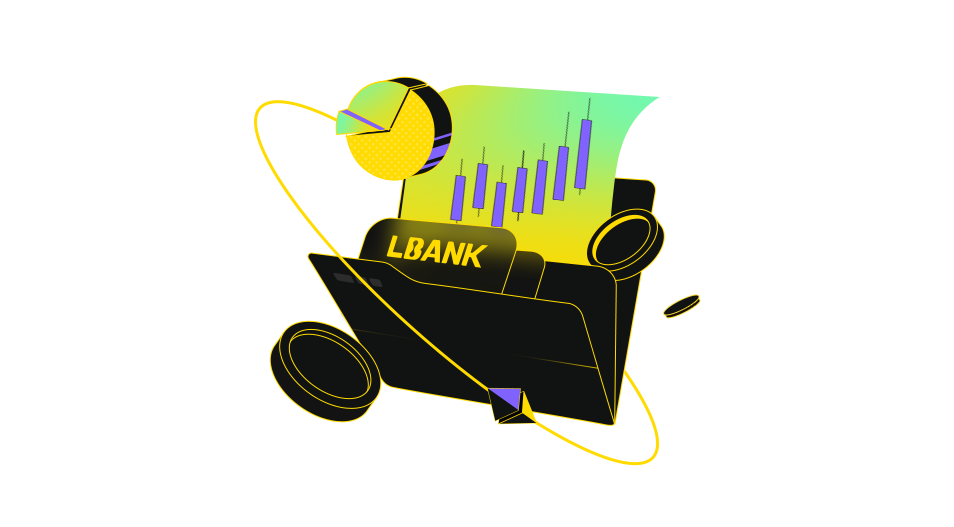How long do crypto bear markets typically last based on historical data?
2025-04-17
Beginners Must Know
"Understanding the Duration of Crypto Bear Markets: Insights from Historical Trends for Beginners."
How Long Do Crypto Bear Markets Typically Last Based on Historical Data?
Crypto bear markets are periods of prolonged price declines that test the patience and resilience of investors. Understanding their typical duration can help investors prepare mentally and financially for the volatility inherent in cryptocurrency markets. Historical data reveals patterns that, while not perfectly predictable, offer valuable insights into what to expect during these downturns.
Historical Overview of Crypto Bear Markets
The cryptocurrency market has experienced several major bear markets since Bitcoin’s inception. Each of these downturns had unique triggers but shared similarities in duration and recovery patterns.
1. **2013-2014 Bear Market (Approx. 12 Months)**
The first significant crypto bear market followed the 2013 bull run, where Bitcoin surged to around $1,000 before crashing. The collapse of Mt. Gox, then the largest Bitcoin exchange, was a key catalyst. Regulatory uncertainty and market speculation further fueled the decline. Bitcoin’s price dropped to below $200, and the bear market lasted roughly 12 months before a gradual recovery began.
2. **2017-2018 Bear Market (Approx. 12 Months)**
After Bitcoin’s historic rally to nearly $20,000 in late 2017, a brutal bear market followed. Over-speculation, the bursting of the ICO bubble, and increasing regulatory scrutiny contributed to the downturn. Bitcoin’s price fell to around $3,000, and the bear market persisted for about a year before stabilization and eventual recovery.
3. **2021-2022 Bear Market (Approx. 12-18 Months)**
The most recent bear market began after Bitcoin reached an all-time high of nearly $69,000 in November 2021. A combination of factors, including macroeconomic uncertainty, aggressive interest rate hikes, and high-profile collapses like TerraLUNA and FTX, drove prices down. Bitcoin eventually bottomed around $15,000 in late 2022. The full duration of this bear market spanned between 12 to 18 months before signs of recovery emerged in 2023.
Common Themes in Bear Market Duration
From these historical examples, a pattern emerges: crypto bear markets typically last between **12 to 18 months**. However, the exact duration can vary based on external factors such as:
- Regulatory actions
- Macroeconomic conditions (e.g., inflation, interest rates)
- Major industry failures (exchange collapses, stablecoin depegging)
- Technological developments (adoption, scalability improvements)
Why Do Crypto Bear Markets Last This Long?
1. **Market Psychology**
Bear markets often persist until weak hands (short-term speculators) are shaken out, and long-term investors accumulate at lower prices. This process takes time.
2. **Recovery Requires New Narratives**
Bull markets usually resume when new catalysts emerge, such as institutional adoption (e.g., Bitcoin ETFs) or technological breakthroughs (e.g., Ethereum’s transition to proof-of-stake). These developments don’t happen overnight.
3. **Macroeconomic Factors**
Cryptocurrencies have become increasingly correlated with traditional markets. Prolonged bearish conditions in stocks or commodities can extend crypto downturns.
Comparing Crypto Bear Markets to Traditional Markets
Traditional stock market bear markets (e.g., the 2008 financial crisis) often last longer—sometimes several years. In contrast, crypto bear markets tend to be shorter but more severe in terms of price drops. This is likely due to:
- Higher volatility in crypto
- Faster market cycles
- Younger, less mature asset class
Potential Exceptions and Future Trends
While past bear markets lasted 12-18 months, future cycles could differ. Increased institutional involvement and regulatory clarity may reduce volatility, while black swan events (e.g., a major hack or global crisis) could prolong downturns.
Investor Takeaways
1. **Patience Is Key** – Historically, holding through bear markets has rewarded long-term investors.
2. **Dollar-Cost Averaging (DCA)** – Accumulating during downturns can lower average entry prices.
3. **Focus on Fundamentals** – Projects with strong use cases tend to recover better.
4. **Avoid Panic Selling** – Bear markets end; selling at lows locks in losses.
Conclusion
Based on historical data, crypto bear markets typically last between **12 to 18 months**, though external factors can influence this timeframe. Understanding these cycles helps investors maintain perspective, avoid emotional decisions, and position themselves for eventual recoveries. While past performance doesn’t guarantee future results, recognizing these patterns provides a strategic advantage in navigating the volatile world of cryptocurrencies.
Crypto bear markets are periods of prolonged price declines that test the patience and resilience of investors. Understanding their typical duration can help investors prepare mentally and financially for the volatility inherent in cryptocurrency markets. Historical data reveals patterns that, while not perfectly predictable, offer valuable insights into what to expect during these downturns.
Historical Overview of Crypto Bear Markets
The cryptocurrency market has experienced several major bear markets since Bitcoin’s inception. Each of these downturns had unique triggers but shared similarities in duration and recovery patterns.
1. **2013-2014 Bear Market (Approx. 12 Months)**
The first significant crypto bear market followed the 2013 bull run, where Bitcoin surged to around $1,000 before crashing. The collapse of Mt. Gox, then the largest Bitcoin exchange, was a key catalyst. Regulatory uncertainty and market speculation further fueled the decline. Bitcoin’s price dropped to below $200, and the bear market lasted roughly 12 months before a gradual recovery began.
2. **2017-2018 Bear Market (Approx. 12 Months)**
After Bitcoin’s historic rally to nearly $20,000 in late 2017, a brutal bear market followed. Over-speculation, the bursting of the ICO bubble, and increasing regulatory scrutiny contributed to the downturn. Bitcoin’s price fell to around $3,000, and the bear market persisted for about a year before stabilization and eventual recovery.
3. **2021-2022 Bear Market (Approx. 12-18 Months)**
The most recent bear market began after Bitcoin reached an all-time high of nearly $69,000 in November 2021. A combination of factors, including macroeconomic uncertainty, aggressive interest rate hikes, and high-profile collapses like TerraLUNA and FTX, drove prices down. Bitcoin eventually bottomed around $15,000 in late 2022. The full duration of this bear market spanned between 12 to 18 months before signs of recovery emerged in 2023.
Common Themes in Bear Market Duration
From these historical examples, a pattern emerges: crypto bear markets typically last between **12 to 18 months**. However, the exact duration can vary based on external factors such as:
- Regulatory actions
- Macroeconomic conditions (e.g., inflation, interest rates)
- Major industry failures (exchange collapses, stablecoin depegging)
- Technological developments (adoption, scalability improvements)
Why Do Crypto Bear Markets Last This Long?
1. **Market Psychology**
Bear markets often persist until weak hands (short-term speculators) are shaken out, and long-term investors accumulate at lower prices. This process takes time.
2. **Recovery Requires New Narratives**
Bull markets usually resume when new catalysts emerge, such as institutional adoption (e.g., Bitcoin ETFs) or technological breakthroughs (e.g., Ethereum’s transition to proof-of-stake). These developments don’t happen overnight.
3. **Macroeconomic Factors**
Cryptocurrencies have become increasingly correlated with traditional markets. Prolonged bearish conditions in stocks or commodities can extend crypto downturns.
Comparing Crypto Bear Markets to Traditional Markets
Traditional stock market bear markets (e.g., the 2008 financial crisis) often last longer—sometimes several years. In contrast, crypto bear markets tend to be shorter but more severe in terms of price drops. This is likely due to:
- Higher volatility in crypto
- Faster market cycles
- Younger, less mature asset class
Potential Exceptions and Future Trends
While past bear markets lasted 12-18 months, future cycles could differ. Increased institutional involvement and regulatory clarity may reduce volatility, while black swan events (e.g., a major hack or global crisis) could prolong downturns.
Investor Takeaways
1. **Patience Is Key** – Historically, holding through bear markets has rewarded long-term investors.
2. **Dollar-Cost Averaging (DCA)** – Accumulating during downturns can lower average entry prices.
3. **Focus on Fundamentals** – Projects with strong use cases tend to recover better.
4. **Avoid Panic Selling** – Bear markets end; selling at lows locks in losses.
Conclusion
Based on historical data, crypto bear markets typically last between **12 to 18 months**, though external factors can influence this timeframe. Understanding these cycles helps investors maintain perspective, avoid emotional decisions, and position themselves for eventual recoveries. While past performance doesn’t guarantee future results, recognizing these patterns provides a strategic advantage in navigating the volatile world of cryptocurrencies.
Related Articles
How are RWAs different from traditional financial assets?
2025-05-22 10:16:47
How does DeFi differ from traditional finance systems?
2025-05-22 10:16:47
Can you elaborate on how equitable distribution is achieved in the new tokenomic model?
2025-05-22 10:16:46
What implications does this collaboration have for blockchain gaming acceptance?
2025-05-22 10:16:46
How does U.S. Steel Corporation's performance compare to its competitors in light of the new price target?
2025-05-22 10:16:46
Are there fees associated with different deposit methods on Binance?
2025-05-22 10:16:45
How complex are DeFi protocols involved in yield farming as mentioned in the research news about CoinGecko's Earn Platform?
2025-05-22 10:16:45
How important does Buterin consider institutional adoption of cryptocurrencies?
2025-05-22 10:16:45
What types of insights or findings should be highlighted during the analysis of news articles?
2025-05-22 10:16:44
What role do stablecoins play in facilitating transactions within the cryptocurrency ecosystem?
2025-05-22 10:16:44
Latest Articles
How does DeFi differ from traditional finance systems?
2025-05-22 10:16:47
How are RWAs different from traditional financial assets?
2025-05-22 10:16:47
Can you elaborate on how equitable distribution is achieved in the new tokenomic model?
2025-05-22 10:16:46
What implications does this collaboration have for blockchain gaming acceptance?
2025-05-22 10:16:46
How does U.S. Steel Corporation's performance compare to its competitors in light of the new price target?
2025-05-22 10:16:46
How complex are DeFi protocols involved in yield farming as mentioned in the research news about CoinGecko's Earn Platform?
2025-05-22 10:16:45
Are there fees associated with different deposit methods on Binance?
2025-05-22 10:16:45
How important does Buterin consider institutional adoption of cryptocurrencies?
2025-05-22 10:16:45
What is Mashinsky's perspective on the role of self-regulation within the crypto industry?
2025-05-22 10:16:44
What role do stablecoins play in facilitating transactions within the cryptocurrency ecosystem?
2025-05-22 10:16:44

Limited-Time Offer for New Users
Exclusive New User Benefit, Up to 6000USDT
Hot Topics
Technical Analysis

1606 Articles
DeFi

90 Articles
MEME

62 Articles
Cryptocurrency Rankings
Top
New Spot
Expand
Fear and Greed Index
Reminder: Data is for Reference Only
73
Greed





